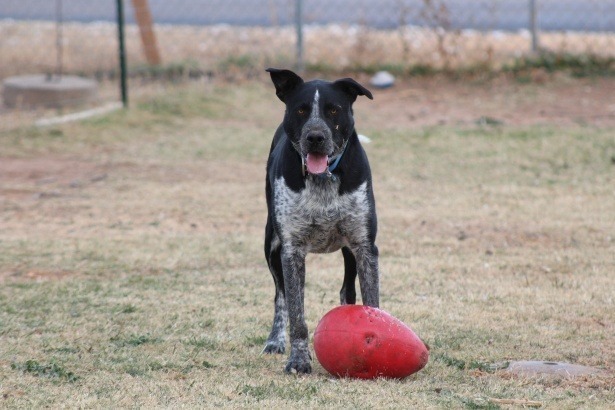Medical doctors have used stem cell therapy to help treat a myriad of orthopedic conditions in people. Veterinarians have similarly used stem cell therapy, but we’re still learning about the benefits and risks of this treatment modality in pets. In this week’s post I share some information about stem cell therapy to increase awareness of this novel treatment. Happy reading!

What is regenerative medicine?
Regenerative medicine – also called orthobiologics – is a relatively new way of treating certain health conditions, typically involving the musculoskeletal system. Using various techniques, veterinarians can make and introduce a solution with a high concentration of substances like growth factors and anti-inflammatory chemicals into a part of the body that tends to heal poorly or slowly. Many folks hear or read the term regenerative medicine and immediately think of cloning or growing new tissues in a laboratory. That’s not regenerative medicine.
What are stem cells?
Using stem cells is a form of regenerative medicine. There are two types of stem cells made by mammals: those of embryonic origin and those from fully matured (aka “adult”) tissue. There is a key difference between the two types. Embryonic stem cells differentiate into any cell cell – this characteristic is called totipotency. In contrast, “adult” stem cells differentiate into more than one cell type but not all of them – this characteristic is called multipotency. Under normal conditions, stem cells divide and differentiate to replace dead cells to facilitate tissue renewal.

In veterinary medicine, we use “adult”-derived stem cells. These cells are also called mesenchymal stem cells, and they exist naturally in muscle, fat, cartilage, bone, and bone marrow, as well as in the tissues that make up the circulatory, urinary, and reproductive systems. The International Society for Cellular Therapy established criteria for a cell to qualify as a therapeutic mesenchymal stem cell, including:
- Ability to adhere to a plastic surface
- Expression of specific cell surface markers while concurrently lacking others
- Capability of differentiating into adipocytes (fat cells), chondrocytes (cartilage cells), and osteoblasts (bone cells)
We preferentially use the term mesenchymal stromal cells (MSC) when referencing stem cells harvested from bone marrow and fat. Why? Because cells from these locations don’t possess all of the characteristics of stem cells described above. Nevertheless, MSCs are the most common types used in veterinary medicine.
Mesenchymal stromal cells are categorized based on the animal from which they where harvested, specifically:
- Autologous: from the same animal
- Allogenic: from a different animal of the same species
- Xenogenic: from an animal of a different species

Why might my pet benefit from stem cell therapy?
Research suggests MSCs may be used for a variety of patient benefits, particularly:
- Reduction of inflammation
- Modulation of the immune system
- Antibacterial properties
- Inhibition of fibrosis (scarring)
- Promote and enhance angiogenesis (formation of new blood vessels)
In veterinary medicine, doctors most commonly use MSCs for orthopedic issues like osteoarthritis, ligament injuries (i.e.: cranial cruciate ligament rupture), and tendon problems (i.e.: supraspinatus tendinopathy). There are also published and/or ongoing clinical trials using MSCs for non-orthopedic conditions, including:
- Chronic kidney disease in cats
- Inflammatory bowel disease (IBD) in cats
- Spinal cord injury in dogs
- Feline asthma
- Degenerative myelopathy
- Dilated cardiomyopathy in Doberman Pinschers
- Gastrointestinal sepsis in dogs
- Acute kidney injury
Pet owners should remember stem cell therapy is not a therapeutic panacea. For pets to reap maximal benefits of stem cell therapy, veterinarians must have a definitive diagnosis and they need to be able to treat the underlying health condition(s). Stem cell therapy does not replace conventional therapeutic interventions – it augments them.
How are stem cells given to my pet?
Veterinarians will need to sedate or anesthetize pets to procure mesenchymal stromal cells from adipose (fat) tissue and bone marrow. They can obtain a sample of bone marrow from the humerus (upper arm bone), tibia (shin), ilium (part of the hip), or femur (upper leg bone). Veterinarians harvest adipose tissue from either the axilla (armpit) or inguinal region (groin).
Once harvested, veterinarians can either submit cells for culturing or they can process them immediately for administration. Culturing is a technique that allows one to develop an expanded population of homogeneous (very similar) MSCs. This technique is performed at specialized laboratories. In contrast, veterinarians immediately process non-cultured samples using a specific type of on-site centrifuge. Processing non-cultured cells are concentrates them, but doesn’t result in population expansion.
Once processed, the MSCs are injected into the target tissue. This typically requires sedation or anesthesia. Administration is an outpatient procedure, and veterinarians usually discharge patients with a short course of pain medication. Those receiving therapy for orthopedic conditions usually participate in rehabilitation under the guidance of a board-certified veterinary sports medicine and rehabilitation specialist or certified canine rehabilitation practitioner (CCRP).

The take-away message about stem cell therapy in pets…
Stem cell therapy for cats and dogs is growing in popularity due to documented success in human medicine. There are many health conditions that may benefit from MSC therapy in veterinary medicine, and we’ve had some positive improvements in certain diseases. Nevertheless, we still have a lot to learn about the role of regenerative medicine in veterinary medicine.
To find a board-certified veterinary surgeon, please visit the American College of Veterinary Surgeons.
To find a board-certified veterinary sports medicine and rehabilitation specialist, please visit the American College of Veterinary Sports Medicine and Rehabilitation.
To find a certified canine rehabilitation practitioner, please click here.
Wishing you wet-nosed kisses,
CriticalCareDVM





